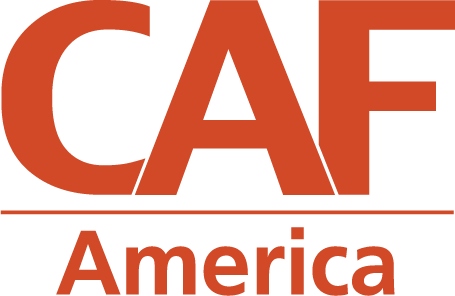In an ever-shrinking world, U.S. grantmakers are increasingly turning their attention to charitable organizations beyond our borders. Before seeking to expand one’s philanthropic vision to include foreign organizations, it is important to understand the complexities that accompany giving internationally. Between the intricate nature of the tax code and the prospect of potential penalties, international grantmaking can present itself as a daunting task. However, with the right guidance, it can be as equally rewarding and beneficial as domestic giving. Supporting foreign charities allows donors to continue working towards their philanthropic goals while simultaneously expanding their geographic scope.
U.S. donors cannot give directly to a foreign organization and receive a tax-deduction; furthermore when you factor in the internal regulations of some countries and monitoring the use of donated funds from afar, granting to foreign organizations without proper due diligence can be risky. Both issues are resolved if the grantee is recognized by the IRS as a public charity; however, very few foreign NGOs can afford to undertake the costly and time-consuming process of registering as and maintaining a 501(c)(3).
So how can a donor make a tax advantaged gift to a foreign NGO that is not designated as a U.S. 501(c)(3)? How can a donor be assured that their donation is used appropriately? The IRS provides U.S. grantmakers with two different options: conducting an equivalency determination or exercising expenditure responsibility. While both options can provide grantmakers with the ability to make cross-border gifts, there are situations where one may be more appropriate than the other. What follows is a discussion of the anatomy of both processes and the different scenarios in which each may be most effectively employed.
Equivalency Determination
Equivalency determination, often referred to as ED, is the process by which a U.S. grantmaker determines whether or not a foreign grantee is the equivalent of a U.S. public charity under 501(c)(3) and 509(a) of the tax code. A good faith determination as to a foreign grantee’s equivalency must be based on an affidavit from the potential grantee, legal counsel, or a qualified tax practitioner. IRS Revenue Procedure 92-94 lists the documents and information that must be included in an affidavit from the board of the foreign charitable organization and translated into English:
- Charter of the organization
- Detailed description of the purposes of the organization and its past and proposed activities
- Dissolution provisions (either as a part of applicable law, or in the charter)
- Legal or charter-based restrictions on private benefit, non-charitable activities, lobbying, and participation in political campaigns
- Detailed financial records unless grantee is a school, hospital, or church (both for current year and 4 years prior)
After collecting this information, it must be reviewed to ensure that the potential grantee would qualify as a 501(c)(3) public charity in the U.S. If the grantee does qualify, an ED can be an effective method for making tax-advantaged cross-border gifts. With ED, foreign grantees are not required to submit annual reports in order to maintain their status and grantmakers need not provide any additional information on IRS Form 990-PF. This limited reporting schedule makes ED an especially attractive option for grantmakers looking to establish a long-term relationship with a particular grantee. Much of the financial burden and time commitment occurs prior to the grant being made, allowing for minimal maintenance and ease of future gifts.
Not All Charities Can Meet The Standard
ED offers grantmakers the opportunity to build sustainable giving relationships with foreign NGOs that are able to meet the high standards required by the IRS. However, many foreign NGOs may have difficulty providing the necessary documentation for ED, and the process can be prohibitive when working with a large number of NGOs in developing countries around the world. Differences in accounting practices, conflicting applicable laws, and translation services can all serve as significant obstacles. Additionally, there are a number of foreign NGOs with legitimate charitable purposes that incorporate as “social enterprises” in nations where it is very burdensome to incorporate as a nonprofit entity. Organizations like this can have structures that resemble a for-profit corporation, and despite having a legitimate charitable purpose, they may be unable to pass ED reviews as a result. In situations where there are many potential hindrances to passing an ED review, the flexibility of Expenditure Responsibility provides grantmakers with a viable alternative.
Expenditure Responsibility
A private foundation may make a grant to a foreign NGO, whether it is deemed the equivalent of a public charity or not, so long as the grantee intends to use the gift to carry out the charitable purpose of the grantmaking foundation and the grantmaker follows a set of guidelines known as expenditure responsibility,
or ER.
ER is comprised of the following:
- Conduct a pre-grant inquiry that ensures the intended grantee’s ability to fulfill the charitable purpose of the grant
- Execute a written grant agreement that restricts the grantee to using the funds for their specified charitable purpose
- Require reports from the grantee detailing how and when the funds were used
- Require the grantee to maintain funds in a separate, dedicated account
- Report the grant on the foundation’s 990-PF
As part of the pre-grant inquiry, the grantee is asked to provide documentation similar to that required by ED, if available: evidence of the legal status of the NGO in its home country, corporate governing documents, a list of board members and officers, an organizational chart, financial reports from the last year, and a description of the grantee’s mission can all be included in the pre-grant inquiry. The purpose of this inquiry is to provide assurance that the foreign NGO is capable of using grant funds for their intended purpose. While this may sound similar to ED, IRS regulations for ER do not require the review of any particular document. Therefore, it is the responsibility of the grantmaker to analyze the supplied documents and determine if there is enough information to provide assurance that funds will be disbursed properly.
A Deep Understanding Is Required
Once the pre-grant inquiry is complete and the written grant agreement is executed, the grant may be made. Following receipt, the IRS requires that a grantee submit annual reports, starting within a reasonable amount of time after the end of the grantee’s fiscal year. Generally speaking, these reports must state how grant funds were used and that use must comply with the executed grant agreement. These reports must be submitted annually until the grant’s funds are expended or the grant is terminated, with the final report covering full expenditures over the life of the grant. A deep understanding of what red flags to watch for and what questions to ask will spell the difference between a successfully made grant and one that could potentially embarrass the donor, or worse — fall into the wrong hands. While the grantmaker is not required to independently verify the veracity of the reports, the grantmaker does need to verify receipt of the reports and confirm that the grant is still being used for its exempt purpose. This information must also be reported on the grantmaker’s annual 990-PF tax return for the duration of the grant.
ER offers foundations the chance to support foreign NGOs of their choosing, even where those organizations would not be able to pass a stringent ED review. ER provides a flexibility that ED cannot, while still giving grantmakers many of the assurances offered by ED.
Deciding Between ED and ER
A private foundation may choose to use either ED or ER, and is not obligated to rule out ED before choosing to employ ER. Equivalency determination can be an attractive option for grantmakers when flexible reporting procedures are important for the grantmaker. Additionally, ED is ideal for grantmakers who plan to fund the purchase of capital assets or an endowment, since the ER reporting requirements could be infinite for such expenditures. For many foreign NGOs, however, the inability to produce the documentation required by the high standards of the IRS will often hinder their ability to pass an ED review. For that reason, many global grantmakers turn to expenditure responsibility. ER is more cost efficient, it offers foreign NGOs more flexibility in submitting historical and governing documents, and it provides grantmakers with frequent assurance through the annual reporting schedule. It also offers the ability to work with small grassroots NGOs or other types of organizations that may not pass an ED.
Whether a private foundation opts for ED or ER should be contingent upon the totality of circumstances that define the relationship with its grantee and the project that they would like to support. There is no right way to make global grants, but understanding the available options can help donors make the best choices for both themselves and their grantees, and ensure their gifts will be safe, secure, and tax-effective.
Blending ED and ER: CAF America’s Enhanced ER
To provide additional assurance on the safety of its grants, some providers such as CAF America, a leader in global grantmaking, offer a service that is a hybrid of both ED and ER. “Enhanced Expenditure Responsibility” combines a heightened internal due diligence that resembles that of ED with the flexibility offered by traditional ER. Foreign NGOs that have been approved through CAF America’s Enhanced ER remain eligible to receive tax-advantaged gifts for a period of 1-3 years. Such an approach highlights the fact that every philanthropic vision is unique. Giving strategy should be forged in a way that addresses that uniqueness.

